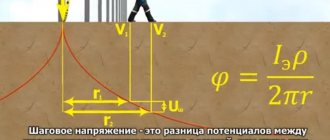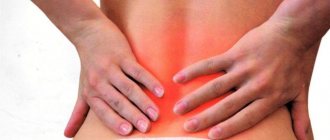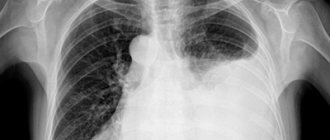Dislocations , sprains , bruises and ruptures (of ligaments, for example) are injuries that damage muscles and joints.
Such injuries are common companions for people who lead an active lifestyle and play various sports. Often the cause of these injuries is a person’s unpreparedness for a given physical activity - which is why it is recommended to specially prepare for each sports achievement.
1
Treatment of dislocations, sprains, ligament tears
2 Treatment of dislocations, sprains, ligament tears
3 Treatment of dislocations, sprains, ligament tears
However, dislocations, bruises, sprains and ligament tears can also be caused at home. Dislocations of the shoulder and knee joints are most often recorded. A dislocation of the ankle joint, for example, is much less common (usually this is an injury to lovers of high-heeled shoes).
Let's try to figure out how to properly treat dislocations and other injuries.
Symptoms of dislocation
Depending on the type of injury, be it, for example, a dislocated hip, a dislocated leg, or a dislocated shoulder, the manifestations of the disease may differ from each other. So, with a similar problem with the hip joint, received at birth, the gait is often disturbed, the posture is bent, and one leg may even become shorter than the other.
However, there are still general symptoms of dislocation, based on which one can assume a dislocation of a certain part of the body:
- redness of the skin in the affected area;
- intense pain that intensifies when moving the dislocated limb;
- external change in the shape of the joint, an increase in its size;
- increased swelling in the injured area;
- loss of sensation in the limbs (this symptom is possible due to injury to nerve endings);
- difficulty in motor activity;
- increase in body temperature, high fever, chills.
Sprains
Sprains occur in a person if he performs sudden movements with a force exceeding the permissible load on the joint. When a ligament is sprained, there is partial damage or incomplete rupture of the capsule of the ligaments that strengthen the joint.
The ligaments most often affected by sprains are the ankle ligaments (especially when the foot rolls in) and the wrist joint. Somewhat less commonly, this injury affects the ligaments of the knee joint. When wearing high-heeled shoes, a woman often gets her legs turned inward and the Achilles tendon stretched.
Degrees of sprain
The following degrees of ligament damage can be distinguished:
- 1st degree , preservation of the mechanical integrity of the ligament with rupture of individual fibers. The presence of slight edema without hemorrhage is characteristic. The patient may feel moderate pain, with limited movement and support;
- Grade 2 , accompanied by partial damage to the articular capsule of the ligaments, the appearance of multiple fiber ruptures, frequent blood loss and moderate swelling. Difficulty in support, movements are quite painful and limited. Some instability of the joint is revealed.
- Grade 3 , complete rupture of the ligaments, which is marked by severe pain, significant swelling and bruising. When moving, joint instability is felt.
For grade 1 and 2 sprains, conservative treatment may often be sufficient.
For complete ligament ruptures, surgical treatment is used.
Causes
The main cause of dislocation, whether it is a dislocation of the shoulder joint or jaw, is indirect trauma. So, for example, if a person accidentally falls directly on his hand, stretching it forward, then, most likely, it is not the hand itself that will suffer, but his shoulder joint.
Often, damage occurs along with a number of severe bone diseases, as additional complications. These include:
- tuberculosis;
- arthritis;
- osteomyelitis;
- arthrosis and others.
Ligament tears
Ligament rupture is a fairly common type of injury for people whose work involves prolonged physical activity. Most often, ligament rupture accompanies a dislocation or fracture, but it can also be an independent injury.
In accordance with the reasons that caused the injuries, traumatic and degenerative ligament ruptures are distinguished. If the first type of damage can be obtained as a result of injuries, then the second occurs during the aging process of the body.
Symptoms of ligament rupture:
- pain and limitation of joint function (impossibility to straighten and lift the injured arm or leg);
- the appearance of edema, hematoma;
- change in the external contours of the damaged joint (joint instability);
- the occurrence of numbness and tingling in the affected limb.
A special place is occupied by ligament ruptures such as meniscus damage.
When should you see a doctor?
If you suspect you have a dislocated hip or dislocated hip joint, you should immediately seek qualified medical help. Otherwise, there is a risk of aggravating the condition of an already damaged joint.
It is necessary to provide first aid for a dislocation. The joint should be immediately immobilized and a cooling compress applied to it to reduce swelling. If the injured person feels unbearable pain, it is necessary to give him an anesthetic drug. Then you need to transport the victim to the hospital to provide him with proper medical care by an experienced trauma surgeon.
Specialists with many years of qualifications and enormous work experience are ready to accept patients at JSC “Medicine” (clinic of Academician Roitberg) at any time. The multifunctional medical institution is located in the center of Moscow, at 2nd Tverskoy-Yamskaya Lane, 10, close to the Mayakovskaya, Belorusskaya, Tverskaya, Novoslobodskaya and Chekhovskaya metro stations.
1.What is joint dislocation and possible causes
A joint is a movable joint of bones that is separated by an articular cavity. In the articular cavity there is the so-called synovial fluid, which lubricates the joint, and the joint itself is protected by the articular capsule - the fibrous membrane. Additionally, the joint is strengthened by ligaments.
A joint dislocation is a condition in which the articular (end) part of the bone comes out of the joint cavity. Joint dislocations are accompanied by injuries to the ligaments, joint capsule or bone tissue.
The main causes of joint dislocations are injuries of various types . However, dislocations can also be a congenital pathology. There are also pathological dislocations of joints, which are the result of any disease, often inflammatory processes, during which the joint capsule or ligaments are damaged.
Most often, joint dislocations are traumatic. The most injured joints are the wrists, fingers, elbows, hip and mandibular joints.
If joint dislocations recur after treatment, they are usually called “habitual dislocations.” Habitual dislocations may appear after unsuccessful treatment.
A must read! Help with treatment and hospitalization!
Treatment of injury
It includes mandatory repositioning of the displaced joint and returning it to its previous position. The manipulation can be performed under both general and local anesthesia. Finally, a plaster cast is applied to the damaged area.
In addition, there is often a need for additional procedures:
- therapeutic massage;
- recreational gymnastics;
- acupuncture sessions.
In particularly difficult situations, surgery may be indicated. If the cause of the dislocation is a bone disease, you should definitely give it due attention and carefully treat it, otherwise the injuries will recur again and again.
Publications in the media
Dislocation is a complete and persistent displacement of the articular surfaces of bones with loss of contact in the articulation area. The distal part of the limb is considered dislocated (exceptions: dislocation of the acromial end of the clavicle, dislocation of the vertebrae). Frequency: 1.5–3% of all types of musculoskeletal injuries. Dislocations in the joints of the upper limb are 7–8 times more common than in the joints of the lower limbs.
Classification • Congenital dislocation - dislocation due to disruption of the intrauterine development of joint elements (usually the hip) • Old dislocation - unreduced dislocation after injury, not amenable to closed reduction due to changes in the tissues surrounding the joint • Incomplete dislocation (subluxation) - dislocation with preservation of partial contact of the articular surfaces • Paralytic dislocation - pathological dislocation that occurs as a result of paralysis of one group of muscles of the limb, giving predominance to the antagonist muscle group • Pathological dislocation - dislocation in diseases of the joint leading to disruption of the articular surfaces of the bones • Complete dislocation - dislocation with complete divergence of the articular surfaces • Habitual dislocation - systematically repeated dislocation in the same joint, caused by weakness of the ligamentous apparatus of the joint and the surrounding muscles and (or) anatomical changes in the articular ends of the bones • Traumatic dislocation - dislocation caused by external mechanical action • Irreversible dislocation - dislocation complicated by the interposition of soft tissues between the articulating bones, and also all old dislocations • Complicated dislocation - a dislocation accompanied by complications: intra- and periarticular fractures, damage to great vessels, nerve bundles • By timing: fresh dislocation (injury less than 3 days old), stale dislocation (injury less than 14 days old), old dislocation - injury duration more than 2–3 weeks • Open dislocation • Closed dislocation.
Causes • Trauma with rupture of the joint capsule and ligaments: indirect injury (fall with emphasis on an extended or bent limb), sudden muscle contraction • Diseases of the joints with changes or destruction of the articular surfaces of the articulating bones (osteomyelitis, tuberculosis, tumors) • Congenital anomalies of the joints and bones • Premature cessation of immobilization after the first dislocation may lead to recurrent dislocation.
Clinical picture
• Traumatic dislocation •• Sharp pain •• Deformation of the joint area (depending on the displacement of the articular ends, hemarthrosis and swelling of the soft tissues) •• Forced position of the limb, very characteristic of each type of dislocation •• Change in the direction of the axis of the dislocated limb •• Change in the length of the limb •• Lack of active and sharp limitation of passive movements in the joint •• Symptom of spring fixation •• The dislocated articular end of the bone is not palpable or palpated in an unusual place.
• Habitual dislocation - frequently occurring dislocations due to minor trauma.
• Pathological dislocation - clinic of the underlying disease and dislocation.
Diagnostics • X-ray in two perpendicular projections • It is necessary to determine the peripheral pulse, sensitivity and active movements in the damaged limb to assess the condition of the great vessels and nerve bundles.
Emergency care • Immobilization of the limb • Use of analgesics • Transportation to the trauma department.
Treatment • Early reduction after anesthesia • Immobilization of the limb in a functionally advantageous position for a period of at least 3 weeks • Restoration of function: physiotherapy, exercise therapy • For chronic, irreducible, habitual dislocations, surgical treatment is indicated • Pathological dislocations - surgical treatment, use of orthopedic devices.
ICD-10 • M24.3 Pathological displacement and subluxation of the joint, not elsewhere classified • M24.4 Repetitive dislocation and subluxation of the joint
Application. Hemarthrosis is an accumulation of blood in the joint cavity. The most common location is the knee joint. The diagnosis of the underlying disease is established only after excluding any damage to the joint. Etiology: joint bruise, intra-articular injuries (rupture of the capsule, ligaments, menisci), dislocations, subluxations, fractures, hemophilia. Clinical picture: severe pain, increasing in intensity; rapid increase in joint volume (within several hours); restriction of movements; for the knee joint it is typical - the lower leg in a position of moderate flexion, bulging from the sides of the patellar ligament (when the tibia is flexed), a bean-shaped bulging above the patella (with significant accumulation of blood), a symptom of patellar balloting. Diagnostics: X-ray examination in 2 projections; puncture of the joint cavity (blood in the punctate is a reliable sign of hemarthrosis; drops of fat in the punctate are a pathognomonic symptom of a fracture); arthroscopy. Treatment: transport immobilization; joint puncture and blood removal; arthroscopy (evacuation of blood; hemostasis by increasing the pressure in the joint cavity by 10–20 mm Hg; introducing an additional volume of fluid; electrocoagulation of the bleeding vessel); plaster immobilization (splint) of the limb for 2–3 weeks with a pressure bandage on the joint area; physiotherapy: UHF, magnetic therapy, exercise therapy. ICD-10. M25.0 Hemarthrosis
Rehabilitation after injury
After the dislocation has been treated at the proper level and the patient has gone home with the doctor’s recommendations, the recovery period begins.
In order to strengthen muscles and bones and quickly return them to their previous condition, it is recommended:
- take a course of restorative massage;
- physical therapy course;
- take up regular swimming;
- do not avoid long walks in the fresh air;
- balance your own diet by consuming enough proteins, fats and carbohydrates required by the body.
Prevention of dislocation of the shoulder joint, jaw or other part of the body consists, first of all, of taking good care of your own health, proper nutrition and regular exercise.
Meniscal tears
The menisci of the knee (internal and external) are a kind of cartilage pads between the bones that protect the articular cartilage and ensure smooth movements when walking.
A meniscus tear is a damage to the cartilage formation, which is accompanied by injury to the structures of the knee joint. Injuries such as cruciate ligament injury and rupture of the collateral ligaments (the lateral ligaments of the knee) often occur simultaneously with a meniscus tear. Meniscal tears are common among athletes, especially representatives of contact sports.
The second reason for damage to the meniscus of the knee joint is degenerative disorders in cartilaginous formations. If the meniscus is damaged, the function of the entire joint deteriorates, pain, swelling, cracking and popping appear when bending the knee.
1 Treatment of dislocations, sprains, ligament tears
2 Treatment of dislocations, sprains, ligament tears
3 Treatment of dislocations, sprains, ligament tears
reduction of the joint
realignment of the joint
Dislocation is considered a serious, dangerous injury that must be treated exclusively in a medical facility. Independent action in resolving this issue is excluded. The most common method of restoration is to realign the joint, after which it returns to its normal position. The specialist must take the time to eliminate concomitant symptoms, in particular hemorthrosis. To do this, a puncture is made, cold compresses or a splint are applied.
In the most serious cases, the patient may require surgery, followed by a long rehabilitation process, accompanied by the supervision of the attending physician. Surgery is prescribed only in case of complete rupture of tendons or ligaments. The modern equipment that Dr. Glazkov’s clinic has allows us to consider the surgical intervention minimally invasive, so the recovery period is also minimal.
Diagnostics
During a visual examination, the doctor assesses the condition of the joint and skin, determines the circumstances of the injury, and interviews parents about chronic diseases and other conditions that could cause the injury.
The main instrumental diagnostic method for symptoms of dislocation in a child is radiography, which allows the traumatologist to visually assess the condition of the joint, cartilage and soft tissues. For complicated injuries, CT or MRI may be prescribed; in case of damage to blood vessels and nerves, vascular specialists or neurosurgeons are involved in the examination.
2. Dislocations of the wrist and elbow joint
Dislocated wrist
A sprained wrist is the most common type of sprain. Most often it occurs during a fall, when a person, defending himself, lands on his outstretched arm. Characterized by acute pain. The wrist joints are one of the weakest joints, making them very easy to dislocate.
Elbow dislocation
An elbow dislocation can also result from a bad fall. When the elbow is dislocated, swelling and deformation of the joint can be observed. Dislocation is accompanied by limited motor function and acute pain.
Visit our Traumatology and Orthopedics page
Prognosis and prevention
In most cases, when it comes to traumatic dislocations, the prognosis is favorable.
After complete recovery, there are no negative consequences. With regard to congenital dislocations, the picture is different: in the absence of adequate therapy, lameness, severe arthrosis and other pathological conditions can develop. There is a high risk of disability and limited ability to work in the future. There are no specific measures to prevent dislocations in childhood. To reduce the likelihood of injury, experts recommend:
- provide children with reasonable physical activity to train different muscle groups;
- pay attention to the safety of children while walking, cycling and other similar means of transportation;
- do not help the baby sit, get up and walk prematurely, do not encourage upright posture and in no case force a baby under one year of age to stand on his legs;
- do not swaddle newborns too tightly;
- Do not lift, pull or drag children by the arms or legs.
During pregnancy, the expectant mother must undergo all routine ultrasound screenings, and after the birth of the baby, she should not ignore preventive meetings with a pediatric orthopedic doctor.
You can learn more about dislocations and other injuries of the musculoskeletal system in children and get personal advice from leading Moscow specialists at the SM-Doctor clinic. Registration is carried out by phone and on the website daily and around the clock.








